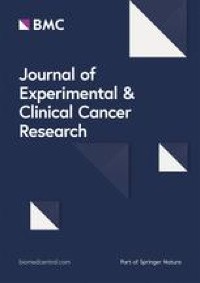|
Αρχειοθήκη ιστολογίου
-
►
2023
(138)
- ► Φεβρουαρίου (74)
- ► Ιανουαρίου (64)
-
►
2022
(849)
- ► Δεκεμβρίου (61)
- ► Σεπτεμβρίου (74)
- ► Φεβρουαρίου (65)
-
▼
2021
(2936)
- ► Δεκεμβρίου (59)
- ► Σεπτεμβρίου (180)
-
▼
Απριλίου
(241)
-
▼
Απρ 12
(18)
- The Influence of Music on Neurosurgical Cases: A N...
- Efficacy of Internal Neurolysis for Trigeminal Neu...
- New Design Concept of Nasolabial Flap for the Reco...
- Combining Laser Resurfacing and Facial Rejuvenatio...
- Anatomy and Aging of the Perioral Region
- Determinants of Response and Intrinsic Resistance ...
- MAP3K7 loss drives enhanced androgen signaling and...
- FDA Approval Summary: Pembrolizumab for the first-...
- Resolvin D1 reduces cancer growth stimulating a pr...
- Disputed rpoB mutations in Mycobacterium tuberculo...
- E. coli GyrA Tower Domain Interacts with QnrB1 Loo...
- Experience with Liposomal Amphotericin B in Outpat...
- Comparison of In Vitro Susceptibility of Delafloxa...
- In Vitro and In Vivo Antifungal Activity of AmBiso...
- Falls Predict Acute Hospitalization in Parkinson's...
- Outcomes after cervical vertebral interbody fusion...
- Lingual Exercise
- Προσευχή Εφφαθά , Θεραπεία του κωφάλαλου
-
▼
Απρ 12
(18)
- ► Φεβρουαρίου (325)
-
►
2020
(1624)
- ► Δεκεμβρίου (293)
- ► Σεπτεμβρίου (234)
- ► Φεβρουαρίου (28)
-
►
2019
(13362)
- ► Δεκεμβρίου (19)
- ► Σεπτεμβρίου (54)
- ► Φεβρουαρίου (5586)
- ► Ιανουαρίου (5696)
-
►
2018
(66471)
- ► Δεκεμβρίου (5242)
- ► Σεπτεμβρίου (5478)
- ► Φεβρουαρίου (4835)
- ► Ιανουαρίου (5592)
-
►
2017
(44259)
- ► Δεκεμβρίου (5110)
- ► Σεπτεμβρίου (5105)
-
►
2016
(7467)
- ► Δεκεμβρίου (514)
- ► Σεπτεμβρίου (1038)
- ► Φεβρουαρίου (793)
Αναζήτηση αυτού του ιστολογίου
Δευτέρα 12 Απριλίου 2021
The Influence of Music on Neurosurgical Cases: A Neglected Knowledge
Efficacy of Internal Neurolysis for Trigeminal Neuralgia without Vascular Compression
|
New Design Concept of Nasolabial Flap for the Reconstruction of a Complex Defect in the Alar Base
|
Combining Laser Resurfacing and Facial Rejuvenation Surgery
|
Anatomy and Aging of the Perioral Region
|
Determinants of Response and Intrinsic Resistance to PD-1 Blockade in Microsatellite Instability-High Gastric Cancer [Research Article]
|
MAP3K7 loss drives enhanced androgen signaling and independently confers risk of recurrence in prostate cancer with joint loss of CHD1
|
FDA Approval Summary: Pembrolizumab for the first-line treatment of patients with MSI-H/dMMR advanced unresectable or metastatic colorectal carcinoma
|
Resolvin D1 reduces cancer growth stimulating a protective neutrophil-dependent recruitment of anti-tumor monocytes
|
Disputed rpoB mutations in Mycobacterium tuberculosis and tuberculosis treatment outcomes [Susceptibility]
|
E. coli GyrA Tower Domain Interacts with QnrB1 Loop B and Plays an Important Role in QnrB1 Protection from Quinolone Inhibition [Mechanisms of Resistance]
|
Experience with Liposomal Amphotericin B in Outpatient Parenteral Antimicrobial Therapy (OPAT) [Clinical Therapeutics]
|
-
This protocol presents an in vitro live-imaging phagocytosis assay to measure the phagocytic capacity of astrocytes. Purified rat astrocyt...
-
Association française pour l'étude du cancer [Imatinib in the treatment of chronic myeloid leukemia in Morocco]. Related Articles [Im...
-
A Case of Miller Fisher Syndrome Due to the Use of Cemiplimab : No abstract available Miller Fisher syndrome is a rare, acquired n...








